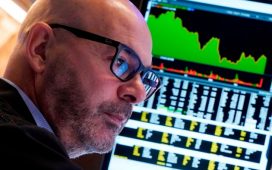High up in Mallorca’s spectacular Tramuntana mountain range, the picturesque village of Deià is a Mediterranean idyll that has been a magnet for artists and bohemians for more than a century.
There is no beach to speak of nearby, which has served to keep the crowds at bay. Its problem now is that only millionaires and billionaires can afford to live there.
“It’s still attracting creative people but now they have to have money,” says the Chicago-born ceramicist Joanna Kuhne, who has lived in Deià since 1980. “They come here to relax and they don’t want to integrate or they don’t know how to. Their life is somewhere else.”

Local people have been priced out. It’s not that there’s nowhere to live – the two estate agents in the village have plenty of homes on offer for upwards of €2m (£1.75m) – it’s rather that people in the Balearic Islands, where the average monthly salary is €1,598, have been thoroughly priced out.
As such, while poverty is driving the depopulation of rural areas on the Spanish mainland, Deià and dozens of villages like it in the Balearics are being depopulated by wealth.
The regional government is fighting back, with a request for European approval for a law that would ban anyone not resident in the islands from buying property.
This has been interpreted as a ban on foreigners’ buying property but that is not the case in Deià, where foreigners, mostly from the UK and US, make up around 37% of the population.
“It’s not about people’s nationality, everyone is welcome. It’s how they plan to use the houses,” says Deià’s mayor, Lluís Apesteguia. “What we want is people who plan to live here. We don’t want people buying second homes, nor do we want speculators.”
It was the English poet and novelist Robert Graves, who settled in Deià in 1929, who put it on the map as a place of pilgrimage for artists and writers.

“Even when my father arrived there was already an artists’ colony of German and Catalan painters,” his son Tomás says. “In fact, he initially rented from an American woman.”
The charcoal industry had gone into decline, leading to massive emigration. As a result, houses were cheap to buy or rent.
When mass tourism arrived in the 1960s, the colony of foreign residents opposed any sort of tourist development.
“That was the first rift between the locals and the foreigners,” says Graves. “The foreigners didn’t want any more building and the locals saw what was happening elsewhere and wanted some for themselves.”
“Back then Mallorca was paradise,” says Carmen Domènech, who moved to Deià from Barcelona in 1974. “It was a refuge for artists, poets and intellectuals.
“There was a good relationship between the locals and the foreigners. You could sit in a bar and Julio Cortázar [an Argentinian novelist] would be at the next table. It was all very natural and it was a proper village with a butcher and a fishmonger.”
Things began to change in 1987 when the Virgin Group boss Richard Branson obtained planning permission to build la Residencia, originally conceived as an artists’ retreat but in reality a luxury hotel.

“The rot set in with the arrival of Branson and that’s when I became an activist,” Domènech says. “The argument went that, thanks to Branson, lots of money would come to the area and everyone would have a job. Nearly all the village was against me because I opposed it.”
Graves says house prices rocketed “once the Residencia started to attract art consumers rather than art producers”.
Prices also rose when, under a bylaw passed in the 1980s, any new houses in Deià had to be built of stone, thus making them much more expensive.
Branson sold the hotel in 2002. It is now owned by Bernard Arnault, the boss of the luxury goods firm LVMH, and currently the world’s wealthiest man.
Francesca Deià, 63, has lived in the village for most of her life. She recalls what it was like growing up with such a cosmopolitan crowd in what was a very conservative and Catholic place.

“To the older generation, the people who came here were like aliens and our parents wanted to protect us from the all the sex and drugs and rock’n’roll,” Deià says.
“I feel enriched that I was able to grow up with all these different nationalities and learn to speak English – and Welsh. The people I grew up with and their children are still here and they all speak Mallorquin. But nowadays I don’t see that happening much. There is less integration.”
Her Welsh partner, Dai Griffiths, says: “It’s curious that often artistic and bohemian types say they feel freer in rural, conservative places than in the city. It’s as though the linguistic and cultural barriers are a plus because they don’t feel a need to engage with the people around them. The village is just a backdrop.”
Apesteguia, who describes himself as “pathologically optimistic”, says the EU needs to be flexible and recognise that the islands are a special case, “otherwise villages such as Deià will cease to exist”.
“The Mallorca population is increasing while here in Deià it’s falling,” he says. “A village without a stable community isn’t a village, it’s just a group of houses or a tourist resort.”
Aside from a small supermarket, nearly all the shops have gone and GP services have shrunk from four days a week to two hours.
“It’s a ghost town and a theme park,” says Domènech.
Apesteguia is inclined to agree. “Tourists came here because it’s authentic,” he says. “But now it’s not.”










